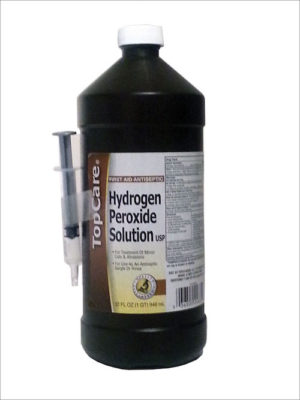
In as much as this subject line sounds like a set up for a clever and snappy retort (trust us, we’ve thought of all of them), it’s asked in earnest. Do you know how to make your dog vomit? We learned how to do it on the occasion that one 30 pound Puli found – and ate in its entirety – one large chocolate Easter bunny. We induced vomiting and she didn’t speak to us for a week. No matter. She lived to an old age, and the children in the house learned how close they came to losing their dog (and being sold into slavery).
We were reminded of this bad memory by a reader who wrote recently that her terrier had eaten a bit of mouse poison found in an elderly neighbor’s old barn. Because of her quick thinking, her dog will be fine, but it got us to thinking that sharing the importance of knowing what to do if your dog has ingested any kind of poison isn’t a bad idea.
We don’t seriously expect you to refer to this page in the event your dog is in crisis, but we do want to put the idea in your head that you should be prepared for an emergency, so within 24 hours of reading this, put together a first aid kit for your pet. Just do it. You may want to read over the rest of this just to familiarize yourself with the process.
Before we go on, we can’t stress enough the importance of talking to a vet or poison control center before making a dog vomit. Do NOT make a dog vomit if you don’t know what they ate because there are times when making a dog vomit is the worst thing that you can do (such as when they’ve ingested bleach, petroleum distillate, or drain cleaner), so always always always consult a veterinarian or poison control first, particularly if you have a brachycephalic dog. If a local vet isn’t available, call the ASPCA’s Animal Poison Control Center (888-426-4435) or the Pet Poison Helpline: (855) 764-7661 . Both hotlines are staffed 24 hours a day, 7 days a week. You may want to print these phone numbers out before you need them in a crisis. You should also have a first aid kit on hand, something you assembled before you need it. You can find a complete list of supplies that you should have in the kit here, but at a minimum, you should have in the house 3% Hydrogen Peroxide, a large syringe or turkey baster, a measuring teaspoon, and Latex or rubber gloves, paper towels, water, cleaning solution, and plastic bags.
Steps to Follow:
Call your veterinarian or pet poison control center/hotline.
Have as much of the following information ready as possible: Your dog’s approximate weight, breed, any health problems the dog suffers from, what he may have eaten, when he may have eaten it, and the amount potentially involved. If you’re instructed to induce emesis (vomiting) at home, proceed. Otherwise follow the directions given to you by the veterinarian with whom you have spoken.
If the dog hasn’t eaten within the last two hours, offer him a small meal. This makes it more likely that the dog will vomit, but is not essential if the dog is uninterested in food.
Measure 1 milliliter (ml) of 3% hydrogen peroxide per pound of dog weight, using either the syringe or teaspoon (or one teaspoon of hydrogen peroxide per 10 pounds). One teaspoon is approximately five ml. The maximum amount of hydrogen peroxide to be given at any one time is 45 ml, even if a dog weighs over 45 pounds. Squirt the hydrogen peroxide into the back of the dog’s mouth using the syringe or turkey baster. Note: Some say it’s better to syringe the solution into their cheek slowly to make sure they are swallowing it, but others have found the dogs spit it out this way.
If vomiting hasn’t occurred within 15 minutes or so, give one more dose of hydrogen peroxide measured out as described above.
If vomiting still does not occur, call your veterinarian or the pet poison control center/hotline back for instructions.
Once vomiting has occurred, collect a sample in a leak-proof container. Bring this to your veterinarian’s office for identification if you are unsure of exactly what your dog may have eaten.
Thoroughly clean up the vomit. Wear latex or rubber gloves while handling vomit, particularly if it potentially contains a material that is hazardous to human health.
Follow up by taking your dog to a clinic. Unless instructed otherwise by your veterinarian or the pet poison control center/hotline, take the dog to a veterinary clinic immediately for evaluation and continued treatment.
